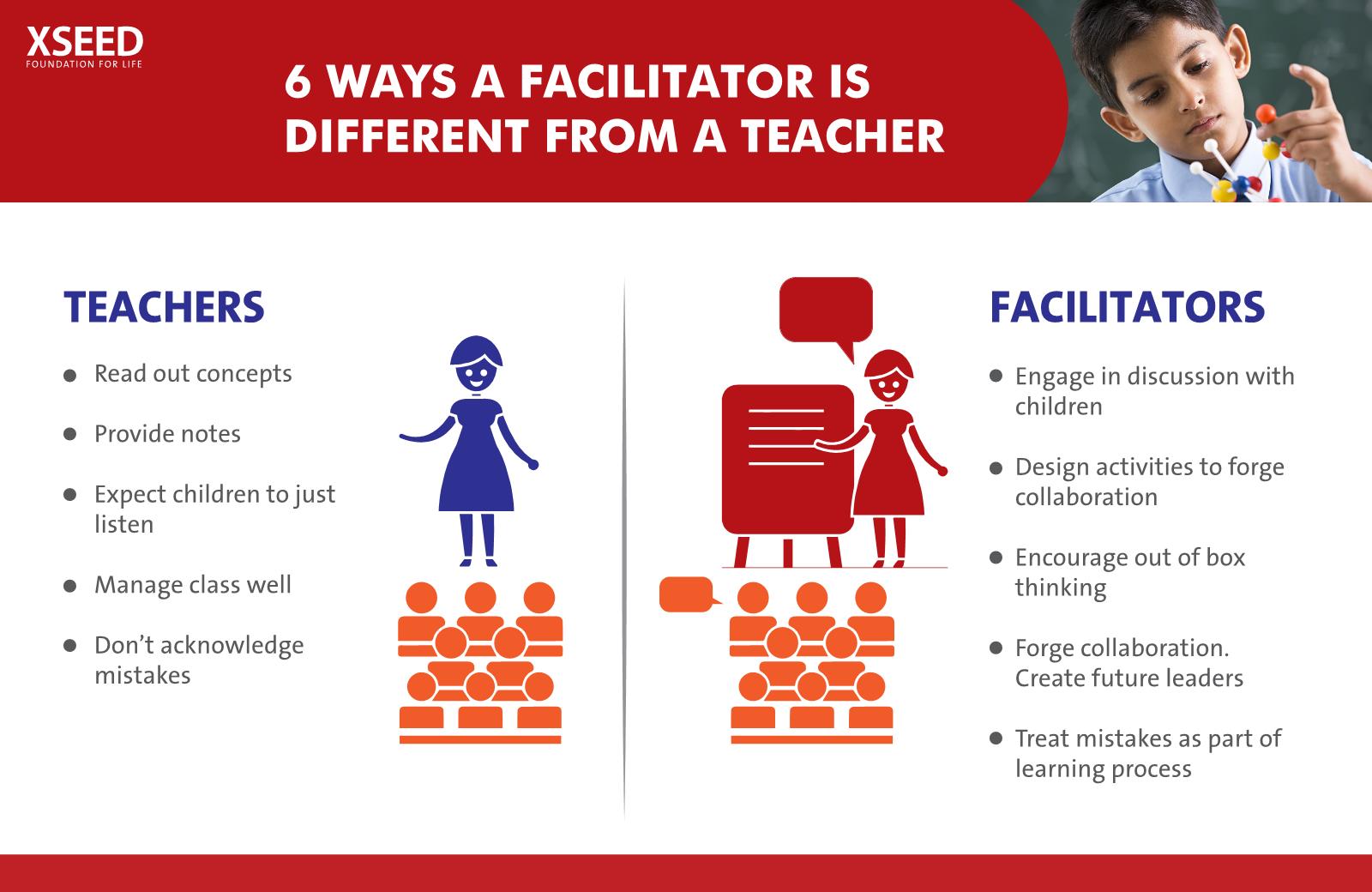
My transformational journey from being a teacher to becoming a facilitator
“A teacher is not someone who teaches something, but someone who inspires the students to give their best in order to discover what they already know.” – Paulo Coelho

In the world we live in today, knowledge is everywhere – the internet, the library and the people around us- many of whom are now connected by social networks and other internet communities. In fact, one can’t deny how much one learns from interactions. I had a life changing experience last month, at the XSEED Education Conference, that hosted global thought leaders from the education and business community. At the conference, I came across various talented new-age teachers, who were among the 75,000 XSEED teachers that had participated in the XSEED SuperTeacher contest 2019.
Recalling my conversation with one of them, Ms. Varleen Kaur of Mira Model Public School Delhi, who also happens to be one of the XSEED SuperTeacher contest semi-finalists, we discussed how the modern-day teacher’s role is moving from being a supervisor to being more of a facilitator who provides resources, monitors progress and encourages students to solve problems. We also discussed that the ideal classroom doesn’t revolve around the teacher. It is completely learner-centred, knowledge-centred and community-centred and practicing this in one’s classroom leads to the true transformation of a teacher.
It is true that students thrive in such environments and those who are more creative will be able to apply their learning to life’s challenges. This also makes them more motivated in the classroom, resulting in fewer discipline problems. Here, through this blog, I would like to share with you some important factors that I believe lead to a teacher’s transformation into a facilitator.
1. There’s something about creativity: Conversation led teaching always creates an environment of excitement and creativity. It leads to students becoming self-directed, independent thinkers. While a teacher reads out concepts from the textbooks, the facilitator helps the students experience what’s written in the textbook, in the most practical way.
2. Collaboration (say no to backbenchers): Unlike traditional learning, which doesn’t involve children, activity-based learning forges an environment of collaboration in the class, enabling the students to work interdependently to solve problems. Over a period of time, you realize, collaboration isn’t a skill, but a discipline you practice over a period of time, which guarantees participation from every student resulting in meaningful collaboration. This style eliminates the ‘first-bencher-back-bencher’ theory and encourages circular seating involving all the children equally.
3. Different Perspectives: Traditionally, teaching has been a one-sided process. And one-sided conversations can never enhance our thinking or encourage freedom of speech. As rightly said by Margaret Mead, American cultural anthropologist “Children must be taught how to think, not what to think”. When children engage in activities, they are not forced to think unidirectional but taught to have a perspective of their own. This helps them understand a concept much better than simply mugging up definitions without understanding the purpose.
4. Divergent Thinking: When you create a free environment, students find new and unique ways to solve problems. This ability to explore problems from different angles helps them think like innovators. In a period that lasts not more than 35-40 minutes, the class has to engage in an activity and find solutions to problems in their own unique way. This helps students think outside the box to get to the solution as quickly as possible.
5. The future project managers: Project management is a keyword in corporate enterprises today, and many of today’s working generation say they wish they were taught this skill early on in life. In order to make students think like a leader, we need to create an environment that helps shape them as thinkers. This way, they have full ownership of their projects and learn how to manage it well.
6. Permission to make mistakes: In the realms of education, we often fail to acknowledge that we learn from our mistakes. But when a student gathers the courage to be wrong, it prepares them to try out new things and think big. This doesn’t mean we embrace failure, but we acknowledge it to be part of the learning process.
These six points really helped me transform into a facilitator. I hope it helps you too. To quote another teacher with whom I had interacted at the conference, who also happens to be the winner of XSEED SuperTeacher Contest 2019, Ms. Cassandra Maria Fernandez, “When you teach from the heart, it makes a lasting impression in the mind of a child.”
I believe with the right tools, continuous learning and positive mindset, it is possible for all of us to turn facilitators in no time, aiding learning in a fun and engaging way!
XSEED works with schools as an academic partner providing a complete solution for developing 21st century skills in children. Designed and curated by over 200 strong and dedicated R&D professionals, our solutions address every aspect of your academic need – micro curriculum, teacher and leader training, books and workbooks, assessment, and technology. For more information, visit xseededucation.com or call us at 1800 102 7200 (toll free number)
This blog also appears under the heading “Six ways you can transform yourself from a teacher to a facilitator”





